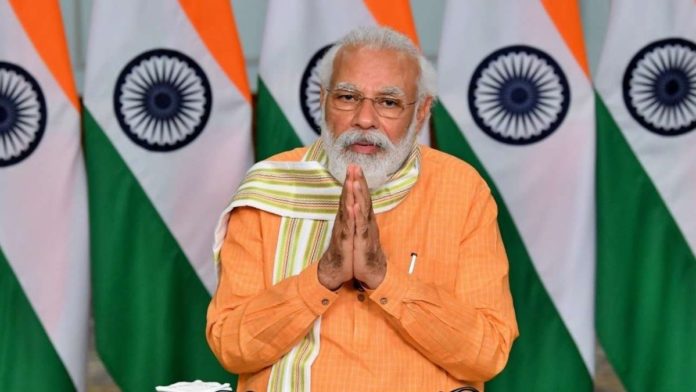In yet another achievement, PM Narendra Modi entered the twentieth successive year as the fairly democratically elected head of a government, without a break, on Wednesday.
The Prime Minister in the public office started on October 7, 2001, as the Chief Minister of Gujarat. This was trailed by three terms as the Gujarat CM in 2002, 2007, and 2012, successively.
During the third term as the Gujarat CM, Modi battled the 2014 general elections. His fame and popularity, which was through the roof both inside and outside the State, led to the BJP declaring him as its prime ministerial candidate in 2013.
He had been projected as the Bharatiya Janata Party (BJP) drove National Democratic Alliance (NDA) candidate for the PM post.
Crushing the Congress-drove government which held influence at the Center, CM Modi left Gujarat to assume control over the reins at the Center. From that point forward, he has set his situation with the NDA alliance holding its situation in the Center with a significantly greater edge in the 2019 general decisions.
“If the first term was fulfilling the needs of people then since 2019, PM Modi has set his sights on fulfilling the aspirations of 130 crore Indians. Jammu and Kashmir has finally been fully integrated in India and Article 370 is history. The Ram Mandir is now a reality with construction starting for a grand Ram Temple at the birth place of Prabhu Ram. Our farmers have finally been freed from artificially imposed chains on them and far-reaching, historic agriculture reforms are now a reality. A host of other reforms such as Labour Reforms, Coal Reforms, allowing private enterprise in the space sector, FDI reforms across the board and tax reforms have put in place a foundation for sustained years of economic growth,” an article shared on the official website of PM Modi on the day read.
Then, the Prime Minister’s excursion to the top of the government began in 2001 in the background of help and relief work for the staggering Bhuj earthquake.
The next years saw him revealing a few favorable policies to individuals and effectively connecting with the individuals legitimately, prompting the development of his picture as a head of the majority.
Further, after turning into the Prime Minister, he proceeded with the supportive of individuals approach, which was additionally reflected in the different plans, for example, Jan Dhan Yojana, the Mudra Yojana, the Jan Suraksha Yojana, the Ujjwala Yojana, the Saubhagya Yojana, Ayushman Bharat, the Pradhan Mantri Aawaas Yojana, the PM-Kisan Yojana, among others.
Besides, during the COVID-19 pandemic stage too the supportive of helpless plans proceeded, under which courses of action were made to give food-grains, financial help to migrant workers, farmers, among others during the lockdown phase.
As PM Modi enters the twentieth successive year in open office, the mantra of ‘development for all’ keeps on directing India ahead towards the objective of making an “Atmanirbhar Bharat”.

